Springer, nochmals
Probebühne 7, Humboldt Lab Dahlem
Ethnologisches Museum Berlin, Germany
25. 06. - 18. 10. 2015
Exhibited works:
Projektion, 2015
Belichtet, 2015
-
Projektion
2015
Mixed media installation
3 Stencils, objects from the oceania collection of the Ethnologisches Museum in 3 illuminated vitrines
Variable dimensions
Tapa patterns – barkcloth designs that are typical of Polynesia and Melanesia – provide inspiration for Sunah Choi’s three projections (“Projektion”). The traditional function of tapa is decorative – on wall hangings, blankets, or clothing – but they also have social and spiritualistic significance, being used for instance as ritual objects of exchange in marriages or as coverings for sacred objects.
In her installation the artist uses geometrical patterns based on tapa. These she modifies, recombines, and employs as cut-out grids in her vitrines. She then arranges select objects from the Museum’s storerooms around these grids, imitating the arbitrary juxtaposition of artifacts geared to pictorial effect as found in illustrations in eighteenth- and nineteenth-century ethnographical literature. The artist places the objects according to associative formal and aesthetic principles without reference to origin or function. Sharp fishing hooks lie alongside earlobe piercers, bone tiki (figures of gods) designed to hold sacred locks of hair, a mask, an axe, or a coconut shell. Illuminated by a lamp, the exhibits and cut-out grid cast shadows that merge in a common projection. Their formal stringency bears similarities to contemporary visual patterns, their rhythm and regularity recalling the pixel grids of modern computer screens. At the same time, they show that the process of abstraction reduces three-dimensional, dynamic, highly complex reality to a flat, motionless, clear image that, however, is never complete. (Angela Rosenberg, Curator)
-
Belichtet
2015
9 cyanotypes on watercolor paper
Each 82 x 61 cm, 146 x 106 cm
Sunah Choi has rediscovered a technique based on the principle of the photogram. This photographic technique dating from the nineteenth century produces cyan-blue images. Objects exposed to ultraviolet light leave pale shadows on photosensitive paper and give rise to photograms. The British botanist Anna Atkins had already used this process in 1843 to document comparative plant studies. With the dramatic reversal of dark shadows into pale shapes the photogram was to become a popular technique of generating pictures among the surrealists; various artists used it to create highly evocative images by the simplest of means.
Sunah Choi situates her praxis between these antithetic approaches. In her cyanotypes she takes objects from Oceania, such as tools and household utensils, which seem exotic to us but are everyday items there. The objects become mysterious, auratic apparitions. The way the artist presents them creates a delicate balance between precise depiction and speculative transfiguration, between scientific image and personal memory. "Belichtet" (Exposed) illustrates the problems and issues involved in reducing an image to its essential features.
The cyanotypes were produced in the photo lab of the Ethnologisches Museum using ten objects (club, fishing rod, fish trap, axe, wood knife, boomerang, wooden mallet, bow and arrows) from the storerooms of the Oceania Department in March 2015. (Angela Rosenberg, Curator)
-
-
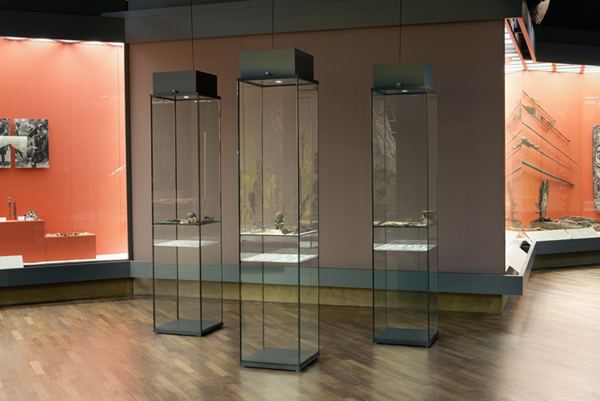
Projektion
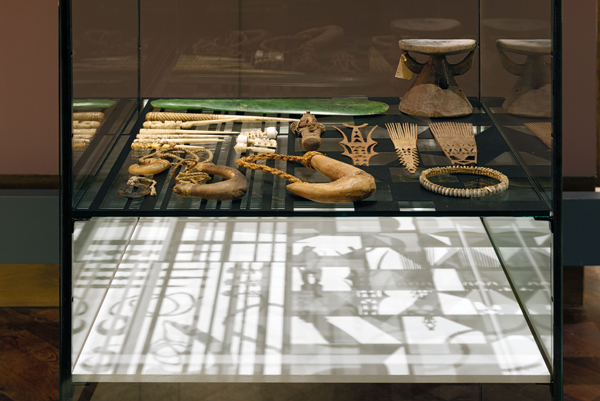
Projektion (Detail)
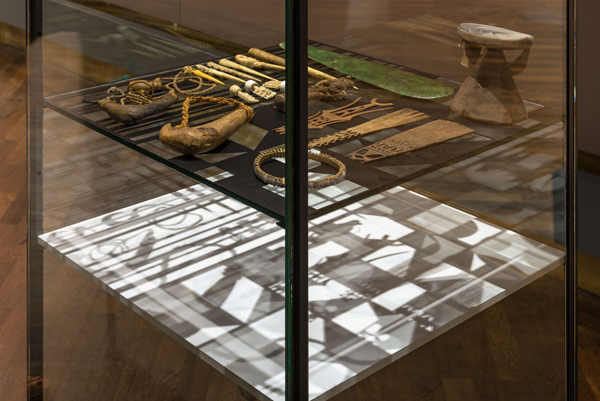
Projektion (Detail)
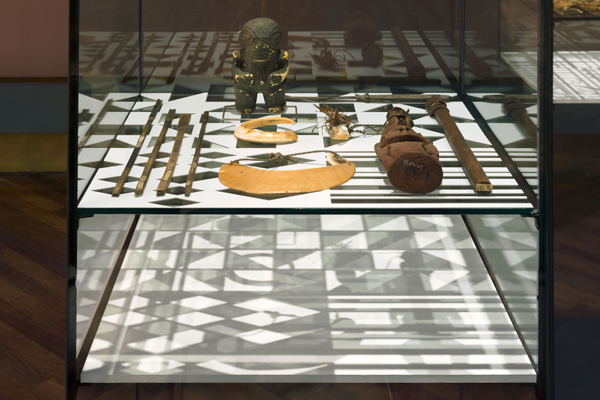
Projektion (Detail)
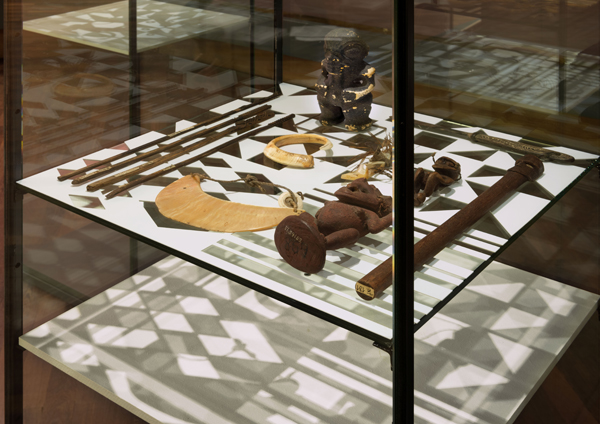
Projektion (Detail)
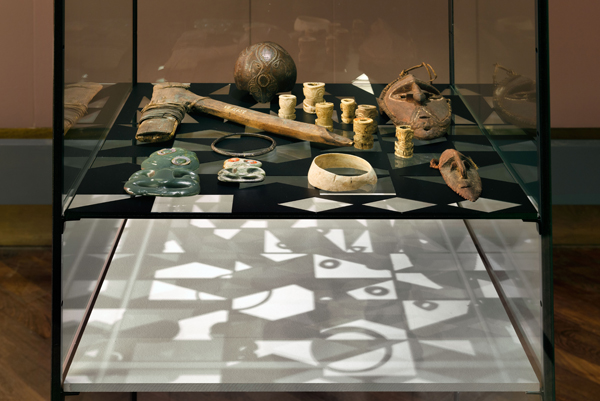
Projektion (Detail)
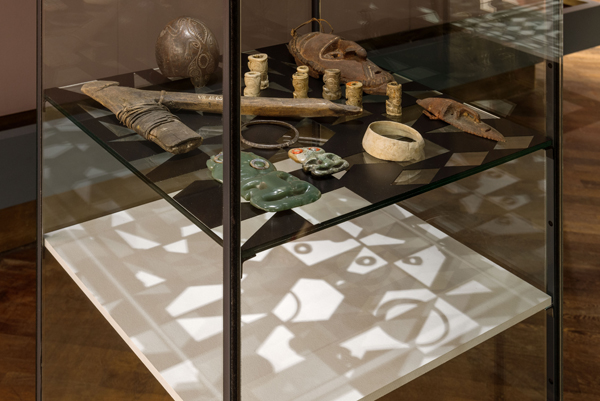
Projektion (Detail)
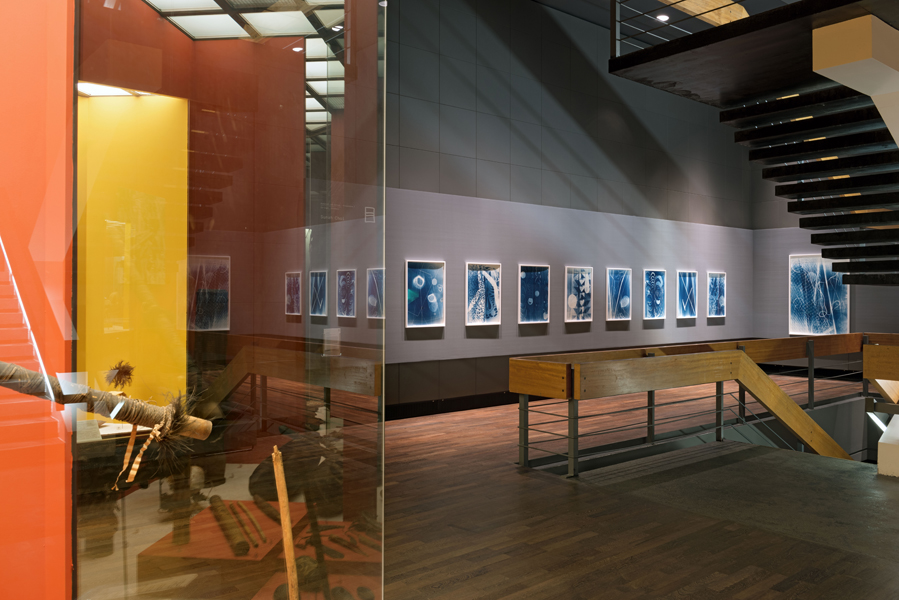
Belichtet
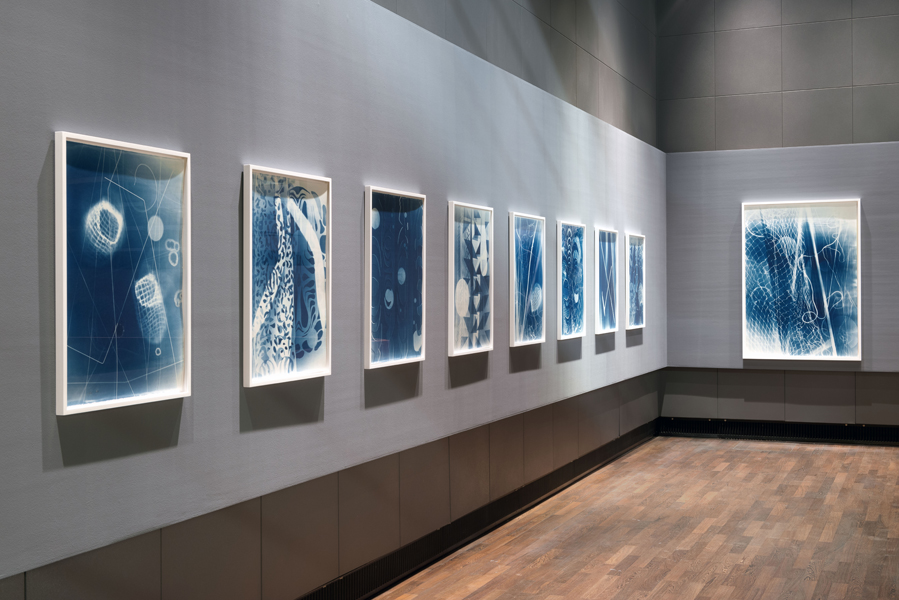
Belichtet